The Arts: Thinking Through Drawing
"Lines of Enquiry looks at drawing as an exploratory and explanatory tool. From the wobbliest doodle to elaborately detailed expositions, the exhibition shows how we use drawing to think through problems, find out how things work,
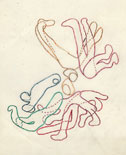 visualise concepts, order information and communicate to other people. The exhibition includes drawings by physicists, geologists, architects, engineers, zoologists, archaeologists, palaeontologists, geneticists, surgeons, historians, philosophers, and composers as well as artists.
visualise concepts, order information and communicate to other people. The exhibition includes drawings by physicists, geologists, architects, engineers, zoologists, archaeologists, palaeontologists, geneticists, surgeons, historians, philosophers, and composers as well as artists."Among the drawings are Sir Roger Penrose's visual reinterpretations of Einstein's relativity equation, Sir John Sulston's genome explorations, Sir Colin St John Wilson's original ideograms for the British Library, Tariq Ahmad's drawings for plastic reconstruction surgery, Richard Seymour's 360º drawing of Piccadilly Circus, Richard Deacon's interlaced layerings, Gerry Gilmore's back of a letter exposition of the structure of the Milky Way, and Sir Harry Kroto's discovery of the C60 carbon atom." -- from the website. <http://www.kettlesyard.co.uk/>
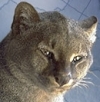 This site, based on
This site, based on  at your fingertips....Fly from space to your neighborhood. Type in an address and zoom right in....Search for schools, parks, restaurants, and hotels. Get driving directions....Tilt and rotate the view to see 3D terrain and buildings....Save and share your searches and favorites. Even add your own annotations....Google Earth puts a planet's worth of imagery and other geographic information right on your desktop. View exotic locales like Maui and Paris as well as points of interest [at home]....'' -- from the website. <
at your fingertips....Fly from space to your neighborhood. Type in an address and zoom right in....Search for schools, parks, restaurants, and hotels. Get driving directions....Tilt and rotate the view to see 3D terrain and buildings....Save and share your searches and favorites. Even add your own annotations....Google Earth puts a planet's worth of imagery and other geographic information right on your desktop. View exotic locales like Maui and Paris as well as points of interest [at home]....'' -- from the website. < computer cards, and an hemispherical glass oven that apparently can bake a cake complete with lighted birthday candles. At Motorama, she gets turned on by the looks of the
computer cards, and an hemispherical glass oven that apparently can bake a cake complete with lighted birthday candles. At Motorama, she gets turned on by the looks of the 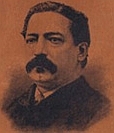 in the late 19th and early 20th centuries and president of the American Federation of Labor from 1886 until his death in 1924." The site, sponsored by the University of Maryland College Park, the National Historical Publications and Records Commission, the National Endowment for the Humanities, and the AFL-CIO, includes a biography and timeline, quotations, a bibliography, and selected writings. <
in the late 19th and early 20th centuries and president of the American Federation of Labor from 1886 until his death in 1924." The site, sponsored by the University of Maryland College Park, the National Historical Publications and Records Commission, the National Endowment for the Humanities, and the AFL-CIO, includes a biography and timeline, quotations, a bibliography, and selected writings. <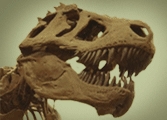 The Museum is home to the world's largest collection of vertebrate fossils, totaling nearly one million specimens. More than 600 of these specimens, nearly 85 percent of which are real fossils as opposed to casts, are on view. Completely renovated between 1994 and 1996, the fossil halls now stand as a continuous loop on the fourth floor, telling the story of vertebrate evolution. Unlike most fossil exhibits, which are arranged in chronological order, the Museum's fossil halls display the specimens according to evolutionary relationships, dramatically illustrating the complex branches of the tree of life, in which animals are grouped according to their shared physical characteristics. Such relationships are determined through a method of scientific analysis called cladistics, which the Museum helped pioneer. The halls' renovation also allowed for new scientific interpretations of favorite displays, as well as the restoration of the fourth floor to its original architectural grandeur." -- from the website. <
The Museum is home to the world's largest collection of vertebrate fossils, totaling nearly one million specimens. More than 600 of these specimens, nearly 85 percent of which are real fossils as opposed to casts, are on view. Completely renovated between 1994 and 1996, the fossil halls now stand as a continuous loop on the fourth floor, telling the story of vertebrate evolution. Unlike most fossil exhibits, which are arranged in chronological order, the Museum's fossil halls display the specimens according to evolutionary relationships, dramatically illustrating the complex branches of the tree of life, in which animals are grouped according to their shared physical characteristics. Such relationships are determined through a method of scientific analysis called cladistics, which the Museum helped pioneer. The halls' renovation also allowed for new scientific interpretations of favorite displays, as well as the restoration of the fourth floor to its original architectural grandeur." -- from the website. < from the
from the 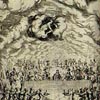 ephemeral art created for these festivals, drew from sixteenth to nineteenth century books and prints in the Getty Research Institute's Special Collections.
ephemeral art created for these festivals, drew from sixteenth to nineteenth century books and prints in the Getty Research Institute's Special Collections.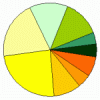 As an aside, that
As an aside, that 



